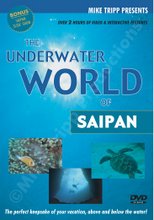 This morning I spoke to a group of grade 4 and 5 students at Saipan Community School. The topic was our local marine environment with a focus on relationships between the characters that make up the reef system and on some of the things that threaten this fragile ecosystem. At one point the discussion turned to the hazards of plastic bags. I would say the majority of the class grasped the fact that turtles are especially prone to this hazard because bags look remarkably similar to jelly fish - a favorite menu item for many a turtle!
This morning I spoke to a group of grade 4 and 5 students at Saipan Community School. The topic was our local marine environment with a focus on relationships between the characters that make up the reef system and on some of the things that threaten this fragile ecosystem. At one point the discussion turned to the hazards of plastic bags. I would say the majority of the class grasped the fact that turtles are especially prone to this hazard because bags look remarkably similar to jelly fish - a favorite menu item for many a turtle!I wish I had read the following letter before I went to the class today, seems the problem goes far deeper then the plastic bag. I must admit that before reading this article I knew plastic was bad but I had not thought of it as being so instantly deadly. I mean, imagine choking to death on a piece of plastic that you thought was just another dorito!
Hi Nicole,
There are several plastic bags available in Australia, which purport to be ‘degradable.’ One manufacturer states that their bags break down to ‘bio-mass.’ When I questioned the company on this statement, they declined to reply.
Even if these bags degraded in their predicted ‘20 days’ I consider it too long a period. We recently released 4 sea turtles after months of rehabilitation. Three beach-washed again, less than three weeks later, with two eventually dying. The post mortem (PM) examinations suggested that these turtles swallowed plastic pieces, likely within hours of release.
I agree with you, entirely, that responsible attitudes need to prevail, rather than the philosophy of “Here’s a bag which is okay to throw away.”
However, I believe that to link plastic bags with turtle mortality, is too narrow a focus, and tends to detract from other forms of plastic which are equally, and in some cases, far more damaging than plastic bags.
Of many PM examinations we have conducted, we, on the East Coast of Australia, are finding that small pieces of hard plastics are far more common in the stomachs and intestines of seaturtles, than pieces of plastic which may be parts of plastic bags.
In one turtle, for instance, we found 76 pieces of plastic, all were hard pieces likely from plastic containers, buckets, plastic bottles and the like. Another has, so far passed 107 pieces of plastic with only a few pieces being attributable to a plastic bag; one piece is part of a clothes peg.
Check the shelves in your local department store. The volume of plastic packaging and containers far outweighs plastic bags. How, then, can we address this issue? Biodegradibility is really not a feasible option.
Education and responsible attitudes need to emerge.
We are happy to provide the Post Mortem reports (with associated images) to anyone who would like them.
Regards
Lance Ferris
Australian Seabird Rescue Inc.
(Seaturtle Rescue/Rehab Division) Wildlife Sanctuary
264 North Creek Road, Ballina. NSW Australia
Here's a direct link to the story at www.marinebio.org and another related one about a "Bring Your Own Bag" program. I believe it's this week that DEQ and Joeten launch a similar type idea here on Saipan. We could use a serious reduction in plastic!





No comments:
Post a Comment